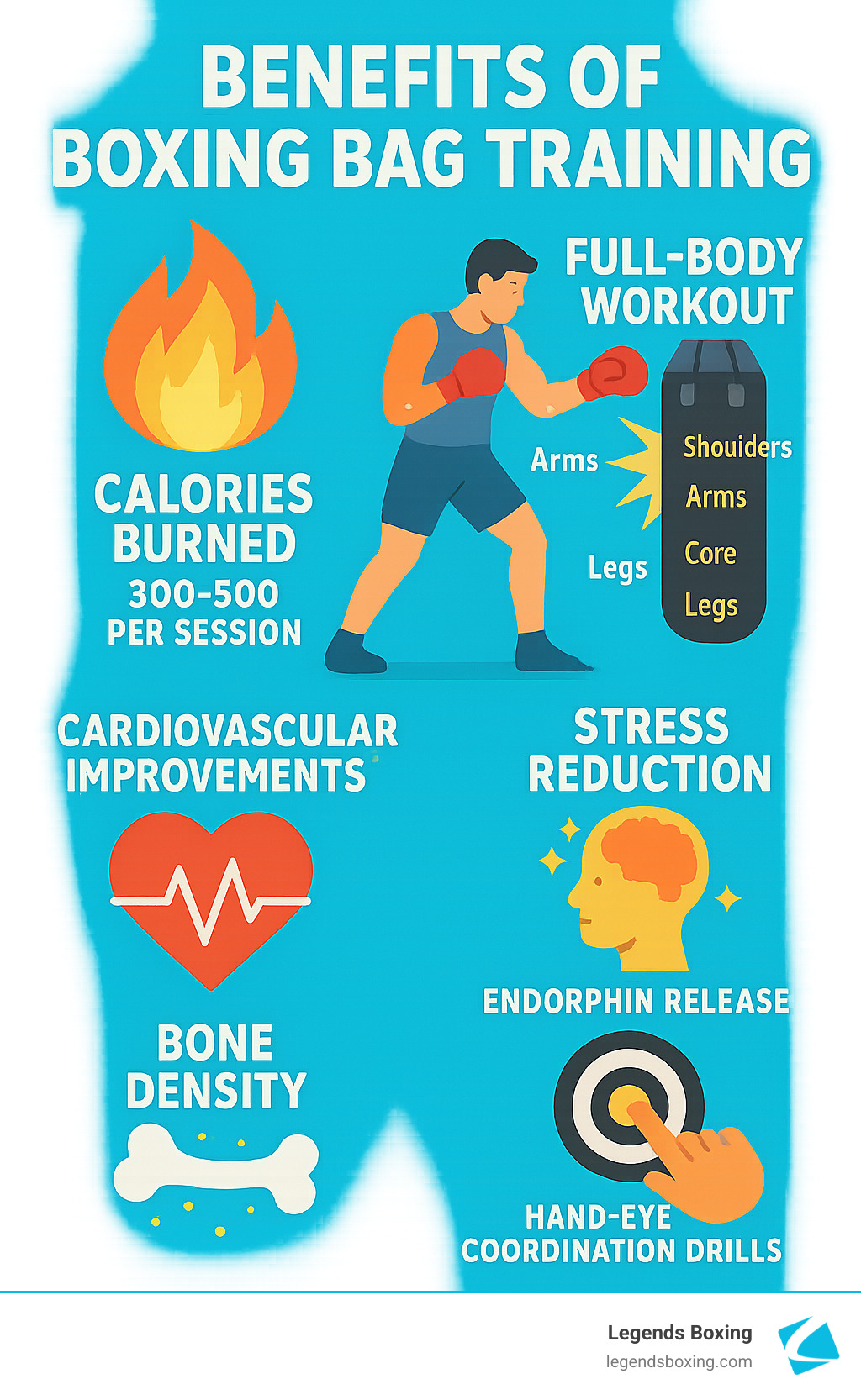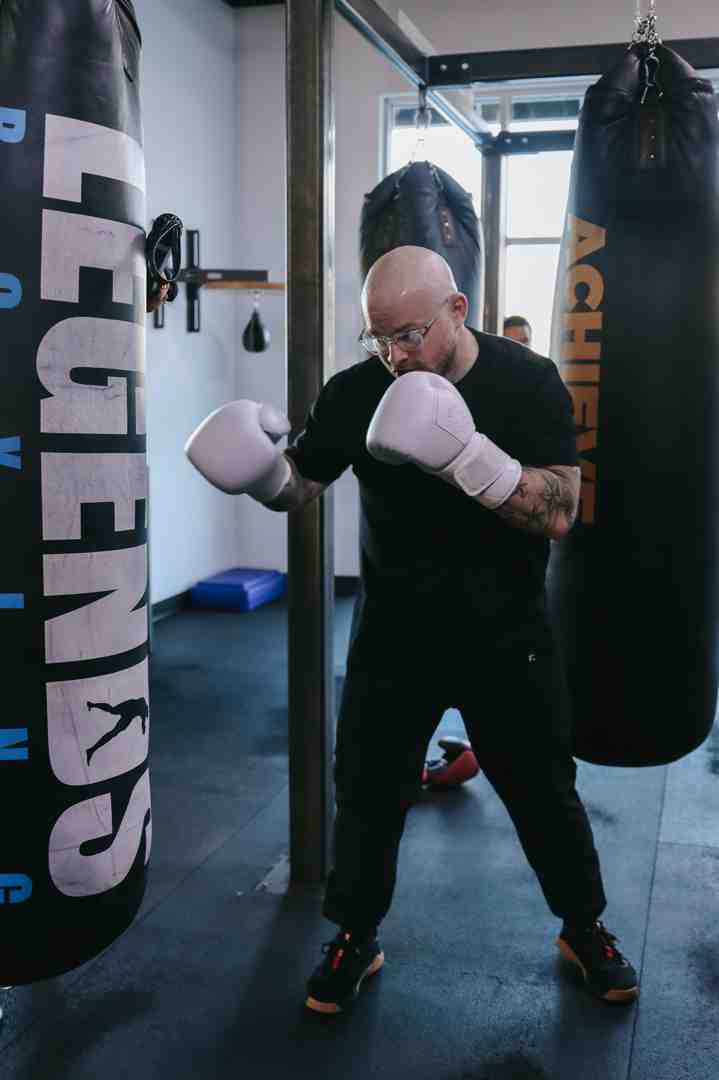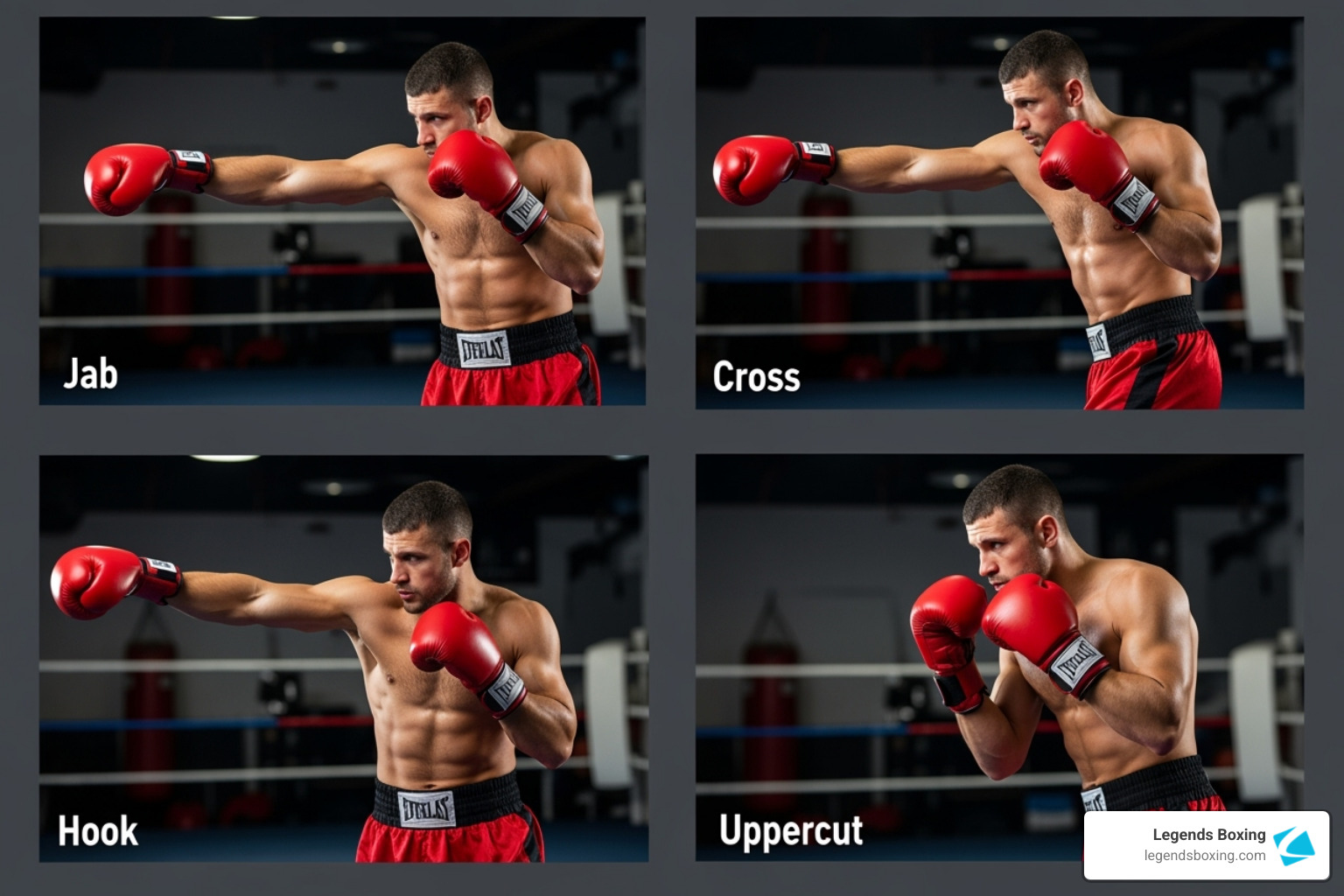Punch Your Way to Fitness: A Comprehensive Heavy Bag Training Program
Why Boxing Bag Training Is Your Ultimate Fitness Solution
Boxing bag training offers one of the most effective and engaging full-body workouts you can find. It's a powerful discipline that torches calories, builds functional strength, sharpens coordination, and provides unparalleled stress relief. If you're tired of monotonous gym routines, this is your call to action.
Let's break down the transformative benefits of incorporating boxing bag training into your fitness regimen:
- Incredible Calorie Burn: A typical session can burn between 300-500 calories per hour, depending on intensity. This isn't just a number; it's a testament to the high-intensity nature of the workout. Unlike steady-state cardio, boxing bag training operates in intervals of explosive effort and brief recovery, a method proven to maximize fat loss and boost your metabolism for hours after you're done.
- True Full-Body Workout: Forget isolating muscle groups. Every punch is a full-body movement. Power originates in your legs, travels through your hips and core, and is finally delivered through your arms and shoulders. Your back and chest muscles work to stabilize and retract your punches, making it a truly integrated strength session.
- Superior Cardiovascular Health: Your heart will be pounding, but in the best way possible. Pushing through 3-minute rounds lifts your heart rate into the optimal training zone, strengthening your heart muscle, improving circulation, and dramatically increasing your overall endurance. It's cardio that never feels like a chore.
- Best Stress Relief: There is something uniquely cathartic about striking a heavy bag. It's a physical and mental release valve, allowing you to channel frustration, tension, and daily stress into a productive and empowering activity. The endorphin rush that follows leaves you feeling calmer, clearer, and more focused.
- Increased Bone Density: The repetitive impact of your fists and feet against the bag and floor sends signals to your body to build stronger, denser bones. This is a crucial benefit for long-term health, helping to ward off osteoporosis. In fact, studies on combat athletes have shown significant benefits; for example, scientific research on bone density in female boxers highlights how the repetitive impact can lead to stronger, denser bones over time.
- Improved Coordination and Motor Skills: Boxing is a dance of precision. It forces your brain and body to work in perfect harmony, improving your balance, timing, and hand-eye coordination. This improved proprioception translates into better performance in other sports and daily activities.
As Rocky Balboa showed us, intense training schedules can transform both your body and mindset. But unlike Rocky's meat locker sessions, modern boxing bag training is accessible, safe, and incredibly effective when done properly in a supportive environment.
I'm Robby Welch, National Head Coach at Legends Boxing, where I've helped develop comprehensive boxing bag training programs used nationwide and personally guided hundreds of members through their fitness changes. My experience competing as an amateur fighter and coaching at all levels gives me unique insight into making heavy bag workouts both effective and enjoyable for beginners and experienced athletes alike. Our philosophy is simple: fitness should be fun, challenging, and deliver real results.

Basic boxing bag training terms:
Before You Throw a Punch: Mastering the Fundamentals
Think of boxing bag training like learning to drive – you wouldn't jump behind the wheel without understanding the basics first. The same goes for throwing your first punch. Getting these fundamentals right from day one not only maximizes the effectiveness of every workout but is also paramount for your safety.
Let's start with protecting your most important tools: your hands. Hand wrapping isn't optional – it's absolutely essential. Those thin strips of fabric are your first line of defense, designed not for padding, but for structural integrity. They hold the 27 small bones in your hand and wrist in tight compression, preventing them from shifting or fracturing upon impact. Always wrap your hands before putting on your boxing gloves, which provide the actual padding. If you're new to wrapping, our coaches at Legends Boxing can show you the proper technique in minutes. Trust me, taking five minutes to wrap properly is infinitely better than sitting out for weeks with a preventable sprain or fracture.
Next comes your foundation: proper stance. Your boxing stance is your command center—everything starts and returns here. Stand with your feet shoulder-distance apart and staggered. If you're right-handed (orthodox), your left foot will be forward. If you're left-handed (southpaw), your right foot will be forward. Imagine standing on railroad tracks, not a tightrope, to ensure a wide, stable base. Your back heel should be slightly off the ground, keeping you ready to move, and your knees should have a slight bend. Your weight should be balanced, ready to shift forward for offense or backward for defense. This stance isn't just about looking the part; it provides the balance to throw powerful combinations and the foundation for effective footwork, allowing you to move fluidly around the bag and return to a safe defensive position.
If you're curious about how we teach these fundamentals in a supportive environment, check out what to expect in a boxing class at Legends Boxing.

The 4 Core Punches to Master
Before you release your inner Rocky, let's master the four fundamental punches that form the backbone of all boxing bag training. These aren't just random movements – each punch has a specific purpose and technique that will make your workouts both safe and effective.
The Jab is your most important punch. Thrown with your non-dominant (lead) hand, it's a quick, straight shot that sets up everything else. Think of it as your rangefinder – it helps you find your distance, disrupt your opponent's rhythm, and keep you in control. The power isn't generated from your arm alone but from a quick, subtle hip rotation and shoulder extension. A good jab snaps out and retracts just as quickly, minimizing your exposure.
The Cross is where you'll feel the real power. This straight punch from your dominant (rear) hand crosses your body (hence the name) and engages your entire kinetic chain. Drive off the ball of your back foot, pivoting as if you're squashing a bug beneath it. This motion initiates a powerful rotation of your hips and torso, channeling that energy into the punch. Remember to keep your non-punching hand glued to your chin for protection—it's a common beginner mistake to drop it when focusing on power generation.
The Hook is your knockout punch for close-range work. Whether you throw it with your lead or rear hand, the key is a semicircular motion with your elbow bent at about 90 degrees. The power comes from a sharp pivot on your lead foot and a forceful rotation of your hips and core—your obliques will definitely remind you of this the next day! Keep your elbow high and parallel to the floor to transfer maximum force and avoid injury.
The Uppercut is all about lifting and exploding upward. Bend your knees slightly, drop your weight, then drive up with a vertical punch. It's a devastating punch for close quarters, designed to get under a guard. The power comes from your legs and hips, not from your arm. The explosive hip rotation and upward drive make this punch incredibly effective for mixing up your combinations.
Mastering proper punching technique takes time and repetition, but getting these basics right will transform your boxing bag training from just hitting something to actually developing real skill. Our expert coaches at Legends Boxing break down these complex movements into simple, learnable steps – you can learn from a Legends Boxing coach to perfect your form.

Choosing and Setting Up Your Punching Bag
Not all punching bags are created equal, and choosing the right one can make or break your boxing bag training experience. Whether you're setting up at home or just want to understand what makes each bag at Legends Boxing special, here's what you need to know.
For home use, the first decision is often between a traditional hanging bag and a freestanding bag. A hanging bag, suspended from a ceiling mount or stand, offers the most realistic feedback, swinging and reacting to your punches, which helps you develop timing and footwork. However, they require a sturdy anchor point. A freestanding bag has a base filled with water or sand and is a great alternative if you can't drill into your ceiling or walls. While they don't swing as naturally, they offer excellent stability for power punching and are easy to set up and move.
The bag weight matters more than you might think. A heavier bag (80-100 pounds or more) is ideal for developing power. It will absorb your hardest shots with minimal swing, giving you clear feedback on your technique. Lighter bags (40-70 pounds) will swing more, which is excellent for training footwork, timing, and speed, but can encourage pushing the bag rather than snapping punches if you're a beginner.
Bag height is also crucial. The center of the bag should align roughly with your chest level, allowing you to practice both body shots and head-level combinations comfortably. Too high or too low, and you'll be practicing unrealistic angles.
| Bag Type | Description & Feel | Best Use |
|---|---|---|
| Traditional Heavy Bag | Firm, consistent resistance with minimal swing | Perfect for beginners learning proper form and power development |
| Specialty Training Bags | Varied resistance and movement patterns | Advanced skill development and specific technique work |
The beauty of training at a dedicated facility like Legends Boxing is that we've done the work for you. We provide a variety of professional-grade bags, from traditional heavy bags perfect for learning form to specialty bags designed for advanced drills. You get the benefit of perfectly maintained and positioned equipment, so you can just focus on your workout and let us handle the rest.






